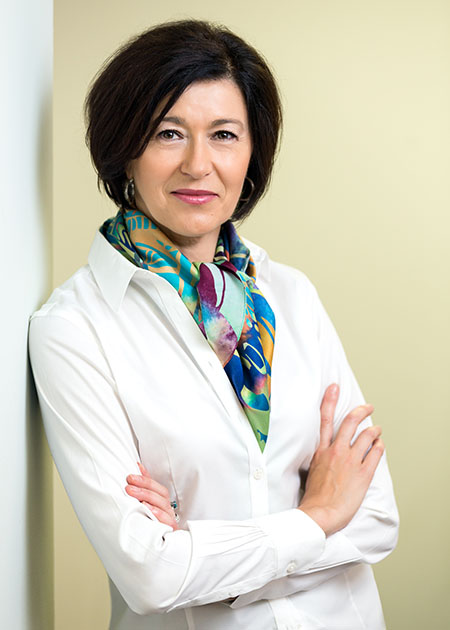
Q & A with the CEO Victoria Odinotska
Q: Why is it so important for Kanter to be solely focused on investment management?
A: It was far from clear when I began my career that I would be working with only investment firms. However, when I had a chance to work in financial PR for the first time I “caught the bug” and realized that the investment and fund world is extremely diverse and every day is an opportunity to learn something new. After twenty years of working in financial PR my interest has not diminished.
Financial markets are truly global these days. Working to understand global perspective is not only important for being effective in this job but is also enjoyable for me. As an avid traveler I love learning about the world, and it is very exciting that many of our clients invest globally, including emerging markets in Asia or Africa. In fact, each member of our team shares a personal interest in global finance and investing and brings their curiosity to our work with financial firms and reporters.
Most importantly, we become more knowledgeable and effective specialists in our field by working with only investment firms. Our undivided focus on financial markets and investment management has allowed us to build deep understanding of the industry and our clients’ businesses. This expertise allows us quicker and more effective engagement with the media covering investments. We have the confidence that our outreach to editors, reporters, and broadcast journalists is well-received because it carries meaningful and useful information and ideas. We also believe we see synergies and patterns for the benefit of our clients more quickly and deliver better results than generalist-type firms. We remain committed to working solely with investment firms.
Q: Why the preference for representing smaller and medium-sized firms? Do firms with less name recognition than Vanguard and Fidelity really have a chance of being noticed by the media?
A: They absolutely do and we have the track record with our clients to prove it. Many of our clients are (or started as) boutique firms but have continuously engaged with the media and seen their views presented in the media’s market and strategies coverage. Our experience and relationships with media have proven time and time again that reporters care most about good insights and compelling stories with actionable takeaways for their readers. I have found that many smaller firms are often more focused than their larger competitors and frequently have strong expertise in their given asset class or investment area. That depth of knowledge helps to qualify them as expert sources with the media, regardless of their size. Our goal is to make their expertise known to the right reporters and publications.
On a personal level, I have observed that the 2008 financial crisis has dented confidence in professional investment management, particularly with active managers. Our focus remains on working with investment managers who put their responsibilities as stewards of client capital above all else. I feel it is important for the media and the investment community to know that these exemplary firms continue to thrive. I am also passionate about working with investment management firms that have combined investing with creating a positive social or environmental change. Many of these impact investing firms are still small, but working with them is tremendously rewarding. The ethics and personal drive for the benefit of their investors shown by the people at the companies we represent deserve media attention. This is the primary reason Kanter exists.
Q: Why does Kanter focus on traditional media relations in a “digital media world”?
A: There’s no doubt that dramatic changes in media have created a shift to digital and social channels as an important or even primary means of communication for financial firms. Market-driven participants have flocked to platforms like Twitter or LinkedIn to share real-time viewpoints and insights. Major financial influencers from Mohammed El-Erian to Mark Mobius share their unfiltered thoughts directly with scores of followers via these channels as well as their own blogs.
Despite widespread adoption of new mediums our clients still realize the highest value by working with traditional media formats. There are several main reasons for this.
First, traditional media and newer media channels are not mutually exclusive. What we call traditional business and financial publications such The Wall Street Journal, Barron’s, Forbes or Investment News have long-since joined the ranks of digital media through their online platforms. Additionally, not only are articles in these publications picked up and shared by influencers across Twitter and LinkedIn, weighing in on the stories, but the publications themselves have also built strong social media presence. Thus working with traditional media offers a “one-two punch” because it carries the built-in benefits of digital media.
Second, the centers of influence for investment managers, financial advisors and other professional investors remain fairly concentrated within top-tier publications with long histories of dedicated business and financial news coverage as well as large readerships. Because our main goals are to connect our work to our clients’ brand building and asset growth, we focus on the publications that are most likely to have that impact.
Finally, established top-tier publications with professional reporters and editors continue to carry the highest credibility with investors. Working with reporters who understand and cover finance and investments and can engage with clients at their level is key to ensuring the results that will accurately present our clients’ expertise and investment strategies and put them in the correct context. We all know that the number of business and financial publications is much smaller now than ten or even five years ago and many seasoned financial reporters have left journalism. That makes our relationships with the remaining top-tier publications and seasoned journalists, as well as the ability to connect with new reporters joining these publications, all the more important.

